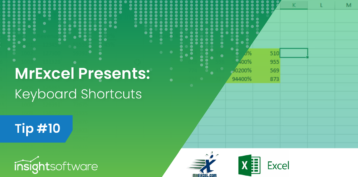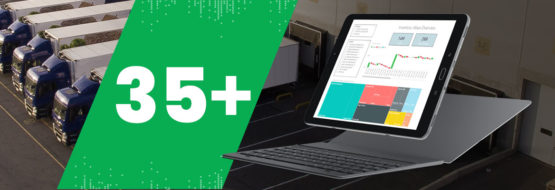18 Best KPIs and Metrics for the Agile CEO

What is a CEO KPI?
A chief executive officer (CEO) key performance indicator (KPI) or metric is a relative performance measure that a CEO will use to make informed decisions. Depending on the size of the company, a CEO’s role can greatly vary. However, there is one thing that they all have in common. They are the highest-ranking executive in the company and make high-level strategic decisions that chart the course for the company. By monitoring financial, operational, and staffing metrics, a CEO is able to identify the strengths and weaknesses of a company and leverage these to their advantage.
This article will outline the key financial, operation, and staffing performance indicators that a CEO should be tracking in 2023, as well as the benefits of tracking these using a dashboard to streamline the reporting process.
Financial KPIs for the CEO’s Dashboard
A CEO can’t make large decisions that will impact the future of the company without taking finances into consideration. From day-to-day operational finances to large capital expenditure (CAPEX) budgeting, here are the financial KPIs that the CEO should be keeping an eye on:
-
Quick Ratio (acid test)
CEOs are often put in a position in which they need to quickly check the company’s financial health. More often than not, a CEO will use the quick ratio for this. This CEO metric checks to see if a company can cover its current liabilities using its current assets. This is probably considered the most conservative method for checking a company’s financial health. A slightly more lenient CEO metric would be the Current Ratio. You can read more about financial KPIs here.Quick Ratio = (Cash + Marketable Securities + Accounts Receivable) / Current Liabilities
-
Operating cash flow (OCF)
As the CEO of a company, you should be very familiar with the company’s OCF. This CEO metric is used to measure how much money a company generates from its ongoing operations. Many CEOs will use this performance metric to evaluate the performance of a company’s core business activities. A growing OCF indicates business success, but also allows for further expansion. On the other hand, a decreasing OCF can indicate that a company needs to change its core business strategy.OCF = EBIT + Depreciation – Taxes – Change in Working Capital
-
Total-Debt-to-Equity Ratio
This key financial metric measures the liabilities a company has against the shareholder’s equity. This financial metric acts as a check to see how much debt is being used to fuel growth. A ratio larger than one indicates that the company has more debt than the shareholder’s equity can cover in the event of a downturn. As such, it can be concluded that the higher the ratio, the higher the risk to shareholders.Total-Debt-to-Equity = (Short-Term Debt + Long-Term Debt) / Shareholder’s Equity
-
Working Capital
Does your company have cash on hand to fund growth? You can check this with the working capital CEO metric. Working capital represents the difference between a company’s current assets and their current liabilities. This metric can also be used to measure a company’s liquidity, operational efficiency, and short-term financial health. A positive working capital represents a company in good financial standing with the potential for growth, whereas a negative value can signify financial difficulties that could lead to default or in severe cases, bankruptcy.Working Capital = Current Assets – Current Liabilities
-
Return on Equity (ROE)
As the CEO of a company, one of your primary jobs is ensuring your shareholders are happy. Often, this is easier said than done. The ROE CEO KPI can help track this performance. It measures the profitability of a company with respect to stockholder’s equity. As a rule of thumb, investors should consider anything less than 10 percent as a poor rate of return: for comparison, the S&P 500 long-term average return is 14 percent, and likely has less associated risk.Return on Equity = Net Income / Average Shareholders’ Equity
-
Revenue Growth
As the CEO, you report to the Board of Directors, which ultimately means that you are reporting to the company shareholders. What do they want to see? Growth. Revenue growth is one of the fundamental KPIs that a CEO should be tracking. This should be tracked on a monthly, quarterly, and annual basis.
Revenue Growth = ((Current Period Rev – Previous Period Rev) / Previous Period Rev) * 100% -
Gross Profit Margin
This financial metric is perfect for a CEO KPI dashboard. It is used to calculate how profitable a company’s products are. You can see how this is calculated in the formula below. It is important to remember that a healthy profit margin being built into products is required to earn a net profit.Gross Profit Margin = (Total Revenue – Cost of Goods Sold) / Total Revenue
-
Net Profit Margin
The goal of every company is to turn a profit (unless you are a non-profit, of course). The net profit margin CEO performance metric is used to measure a company’s profitability relative to its revenue. This is arguably the most important financial metric on a CEO’s KPI dashboard. This performance metric should be tracked in conjunction with gross margin and operating costs to ensure enough money is being generated from sales, and that operating costs aren’t eating too far into profitability.Net Profit Margin = (Total Revenue – Cost of Goods Sold – Operating Expenses – Other Expenses – Interest – Taxes) / Total Revenue
Financial KPI software provides companies with pre-built CEO KPI templates that are out-of-the-box ready for use. However, every company operates a little bit differently and there will be times that your CEO will want to see custom KPIs. Creating meaningful CEO KPIs can be difficult and time-consuming. At insightsoftware, we have compiled a list of KPI considerations to help your KPI creation process.
Top Operational KPIs for the CEO
Typically, a CEO doesn’t handle the day-to-day operations of a company. This is left to the operations department and chief operating officer. That being said, the CEO should still be aware of how well the company is operating. Here are the operational KPI examples that a CEO should be tracking on your dashboard in 2023 :
-
Throughput
When you are running a large-scale operation with many different components, optimization becomes a lot more difficult. All manufacturing companies want to know the total output that they can achieve, otherwise known as throughput. This CEO metric helps management ensure they have enough capacity when it comes to brokering new contracts as well as help operations managers identify bottlenecks in the manufacturing process. Throughput can be increased by reducing equipment downtime, improving maintenance strategies, reducing the number of production steps, etc.Throughput = Units Produced / Time
-
Asset Utilization Rate
This CEO KPI can be applied to any corporate asset, whether it be a piece of machinery, production line, or a vehicle. This key performance metric tracks the percentage of time that a corporate asset is actually being put to use. This is very important for CAPEX considerations. Does it make sense to add a production line when the existing lines are only being used 50 percent of the time? Should you be purchasing extra fleet vehicles? Or can their scheduling be optimized?Asset Utilization Rate = Used Time / Total Time
-
Space Utilization Rate
Real estate and space is a significant portion of a company’s operating expenses. A high space utilization rate will lead to proportionally lower operating costs, and in turn a better net profit margin. Although this metric doesn’t need to be directly front and center on a CEO KPI dashboard, it should be easily accessible for periodic checks. Like the asset utilization rate KPI, space utilization should be consulted before any major CAPEX occurs.Space Utilization Rate = Occupied Area / Total Area
-
Return on Advertising Spend (ROAS)
Most companies spend large amounts of money on advertising. If you are pouring money into your advertising budget, you want to at least make sure it is cost effective, right? This CEO KPI tracks revenue relative to advertising spend to help gauge how well your campaigns are performing. This performance metric is best used in conjunction with other metrics like cost per click, conversation rate, and traffic rates.ROAS = Revenue / Advertising Costs
-
Cost-Per-Acquisition
As a company, you have clients. Are you aware of how much it costs to acquire each of these clients? The cost-per-acquisition CEO metric measures the average cost to acquire a client, but also provides insight into other aspects of how well the company is operating. It can be used to evaluate specific marketing campaigns, performance of sales reps, and organic growth.Cost-Per-Acquisition = Total Amount Spent / Conversions
At this point, you should have a general understanding of financial CEO KPIs, operational CEO metrics, and how to develop KPIs tailored to your needs. That being said, you don’t have to reinvent the wheel. We will talk about the benefits of using reporting software and pre-built CEO KPI templates.
Staffing KPIs for the Modern CEO
Finding the right person for the right job can often be a very difficult task. Retaining a good employee can be even more difficult. Let’s not forget managing workloads and schedules. Staffing is difficult at the best of times, but we are here to help. Check out these staffing CEO KPI examples that you should be tracking in your KPI dashboard:
-
Employee Utilization Rate
Are your employees working hard? Or hardly working? This CEO performance metric is commonly used by professional services and consulting firms to track how billable employees are. It is inevitable that employees will have to charge some hours to non-billable tasks, but ideally this rate should be as close to 100 percent as possible.Employee Utilization Rate = Number of Billable Hours / Total Number of Hours Recorded
-
High Performer Turnover Rate
Hiring doesn’t fall under the CEO’s responsibilities. That being said, we all know how difficult hiring is. When you do finally hire that “perfect fit,” you want them to stay at the company for as long as possible. This CEO metric is used to measure how well your company retains its top talent. This metric can also be used to directly evaluate the performance of newly implemented employee retention programs like stock options.High Performer Turnover Rate = High Performers Who Left the Company / Average Number of High Performers
-
Female-to-Male Ratio
Environmental, social, and corporate governance (ESG) should be on every CEO’s radar as it has quickly taken center stage over the last couple years. One of the simplest ways to look at a company’s ESG is by looking at its workforce. Is there an even balance of female/male employees? Has this ratio been changing over the years? Ideally, the female-to-male ratio should be as close to 1:1 as possible.Female-to-Male Ratio = Number of Female Employees: Number of Male Employees
-
Ethnic Diversity Ratio
As the name implies, this CEO metric is used to measure the ethnic diversity in a workplace. As most CEOs already know, innovation comes from people with different perspectives collaborating with one another. One of the best ways to foster this innovation is through ethnic diversity in the workplace.Ethnic Diversity Ratio = Number of Ethnic Minority Employees / Total Number of Employees
-
Client Feedback Ratings
Client relationships are of utmost importance in the business world. You should try and get client satisfaction feedback after every completed transaction. This information is important for several reasons: Satisfied clients will generate referrals or potentially become repeat clients, and client satisfaction can be tied to employee satisfaction. To best see the value of good customer service, this CEO performance metric is best utilized in conjunction with other performance metrics that track referrals and how many clients return a second time.
Many C-level executives tend to forget that “people are their greatest asset,” and although it is important to try and optimize these staffing KPIs, executives should be prudent not to treat these KPIs as tick boxes that get checked off as requirements are met. Staffing KPIs should help you set goals to strive towards, but not determine who you hire.
How to Develop a KPI for a CEO KPI Dashboard
As we mentioned previously, CEOs in different industries will have different specific KPIs to monitor on a regular basis. This section will guide you through the thought process required to tailor a KPI to your needs.
- Have a goal. This is the most fundamental aspect of your KPI creation process. What are you trying to achieve? What can measure this achievement? Keep in mind that this goal cannot be subjective. It needs to be numerically assessable.
- Take a holistic approach. How will this new KPI impact the company? Will tracking these data create synergies between departments? Or will it cause them to compete with one another? Ideally, a strong KPI should help the whole company move toward its goals.
- Align with company processes. You can create as many KPIs as you want, but if they don’t align with company processes, it will make collecting the data difficult. It is best practice to integrate the performance metrics into the existing company framework. This reduces the marginal cost of data collection and exponentially reduces implementation time.
- Create a company culture. The goals you set will impact the culture of a company. Collecting data and setting targets will further emphasize this culture. As such, it is important to create a KPI that positively impacts the workplace dynamics and encourages people to do things that will help improve the company.
- Compiling the data and reporting them. This is by far the most critical aspect of KPI creation. If you have followed all of the steps above, a lot of time and effort has been put into creating this new CEO KPI. However, this performance metric is only useful if you can collect and interpret the data in a meaningful way. This is where a KPI dashboard can be implemented to streamline and automate the data collection and processing.
- Make informed decisions. This is the real objective of your KPI. Does the new performance metric that you have created help make better decisions? Can you pair it with other metrics to get a better picture of what is happening in the company?
This should give you a solid foundation for creating your own custom KPIs, as well as an understanding of how much time and effort goes into creating a meaningful performance metric. As you can see, unless you absolutely need to create a new measure, it is much easier to stick to the tried and true performance metrics.
5 Things Not to do When Choosing a Financial Reporting Tool
Learn MoreStreamline Your Reporting with CEO Reporting Software
Tracking and managing KPIs can be a very laborious task that eats into resources and increases operating expenses. That isn’t to say you should stop tracking KPIs, but maybe a more efficient approach is required. At insightsoftware, we have a passion for efficiency. As such, we have created specialized reporting software that has been designed to manage, track, and report KPIs onto a consolidated dashboard. Here are some of the ways in which our software can streamline your reporting process:
- Interface with other services. Every company dreads implementing new systems as it leads to downtime and overhead costs. With insightsoftware, you don’t have to worry about this. Our software solution can interface with your existing ERP and automatically collect relevant data.
- Data consolidation. insightsoftware’s KPI dashboard gathers all of your data into one central location, making them accessible through a user-friendly interface.
- Pre-built KPI templates. As we mentioned previously, developing KPIs and creating a dashboard requires a lot of time and effort. Our reporting solutions come ready-to-use with pre-built CEO KPI templates.
- Generate reports instantly. In our opinion, it is ridiculous that armies of accountants work overtime to close each quarter. Why not automate this process? Having all your data consolidated to one location with live updates means that up-to-date reports can be generated on the fly.
It should be very evident that using a reporting software solution can greatly reduce the burden on your accounting team and ensure that the CEO has the most current information to make data-driven decisions. If you are interested in a free demonstration of how we can help streamline your reporting process, you can contact us here.
Top 5 Excel Tips & Tricks Every Finance Manager Should Know
Download NowBeing the CEO of a company is no easy task. Your decisions ultimately impact the direction a company takes, whether it be for better or for worse. At the end of the day, everyone is human; you can only make decisions to the best of your abilities. With KPIs and a dashboard, you can at least make well-informed, data-driven decisions.
We hope that you have enjoyed learning the best CEO KPIs for 2023, how to create your own KPIs, and how you can streamline your reporting process with a reporting software solution. If you have any questions or are interested in speaking with a reporting and KPI expert, please contact us.






